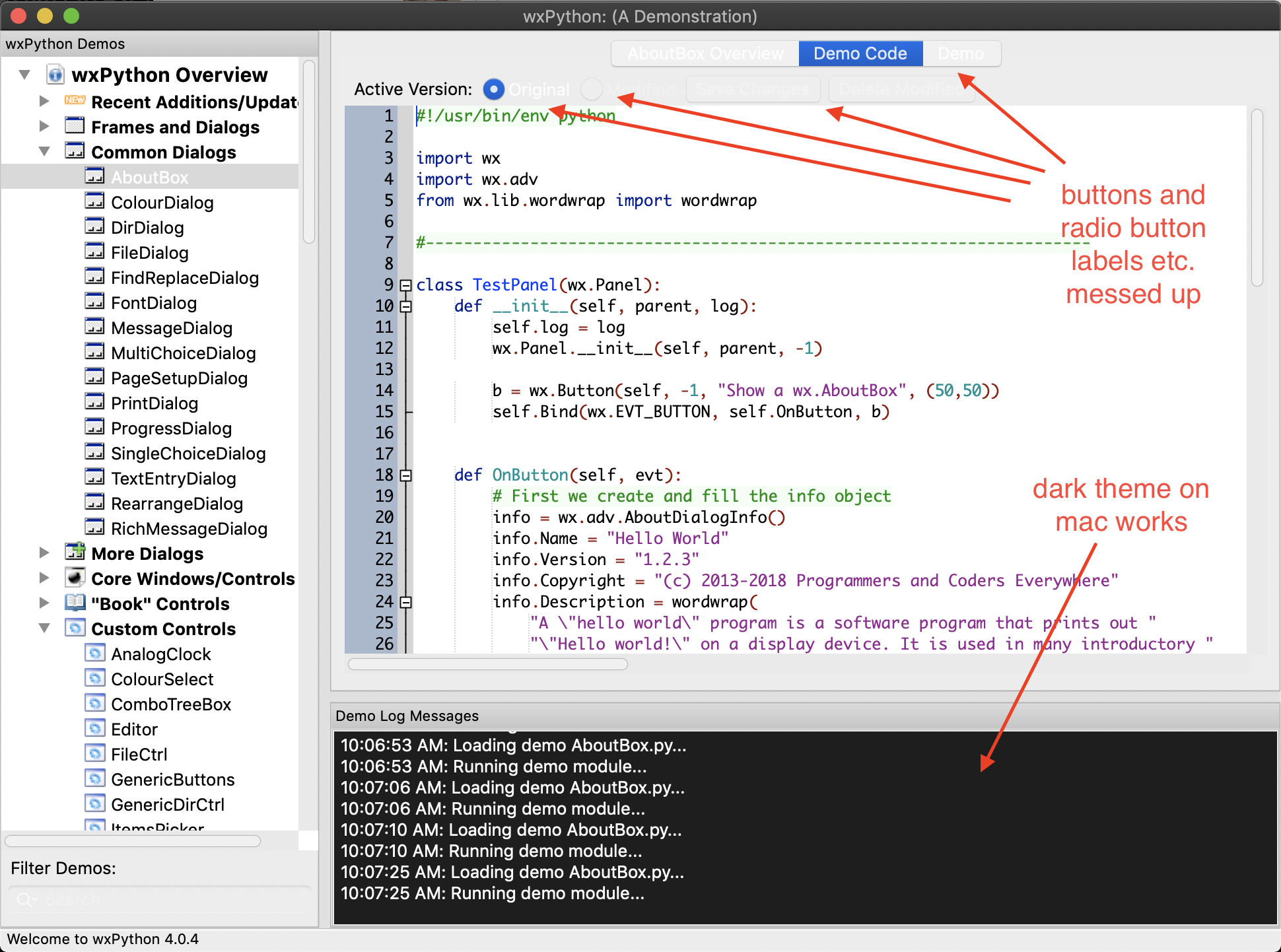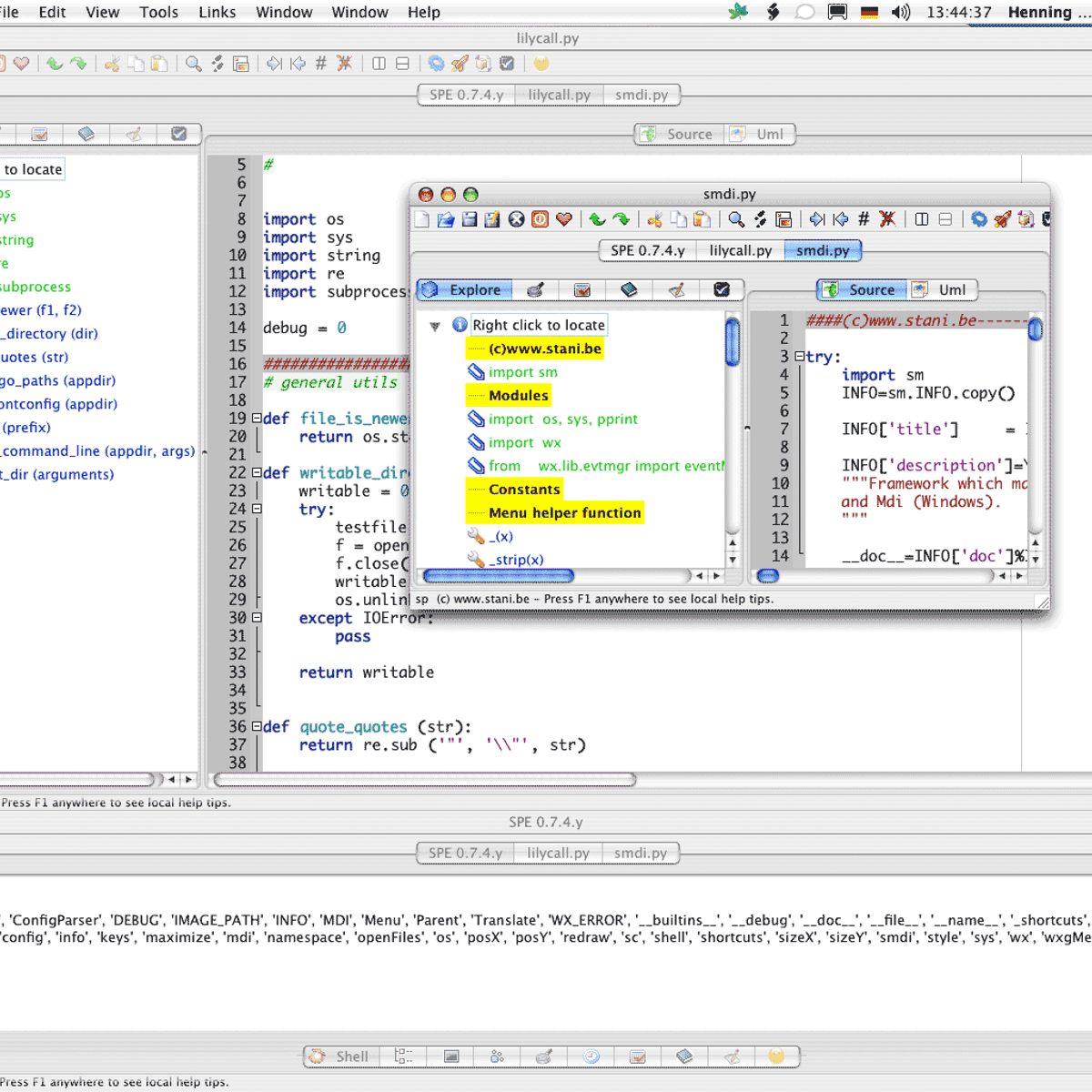- Pip Install Ipython
- Python For Mac Free
- Python For Macbook Air
- How To Download Ipython
- Install Ipython Mac
- Ipython On Windows
Doing it Right¶. Let’s install a real version of Python. Before installing Python, you’ll need to install GCC. GCC can be obtained by downloading Xcode, the smaller Command Line Tools (must have an Apple account) or the even smaller OSX-GCC-Installer package. The IPython shell doesn't go this far, but does provide a number of keyboard shortcuts for fast navigation while typing commands. These shortcuts are not in fact provided by IPython itself, but through its dependency on the GNU Readline library: as such, some of the following shortcuts may differ depending on your system configuration.
Note
Check out our guide for installing Python 3 on OS X.
Mac OS X comes with Python 2.7 out of the box.
You do not need to install or configure anything else to use Python. Having saidthat, I would strongly recommend that you install the tools and librariesdescribed in the next section before you start building Python applications forreal-world use. In particular, you should always install Setuptools, as it makesit much easier for you to install and manage other third-party Python libraries.
The version of Python that ships with OS X is great for learning, but it’s notgood for development. The version shipped with OS X may be out of date from theofficial current Python release,which is considered the stable production version.
Doing it Right¶
Let’s install a real version of Python.
Before installing Python, you’ll need to install a C compiler. The fastest wayis to install the Xcode Command Line Tools by runningxcode-select--install. You can also download the full version ofXcode from the Mac App Store, or theminimal but unofficialOSX-GCC-Installerpackage.
Note
If you already have Xcode installed, do not install OSX-GCC-Installer.In combination, the software can cause issues that are difficult todiagnose.
Note
If you perform a fresh install of Xcode, you will also need to add thecommandline tools by running xcode-select--install on the terminal.

While OS X comes with a large number of Unix utilities, those familiar withLinux systems will notice one key component missing: a decent package manager.Homebrew fills this void.
To install Homebrew, open Terminal oryour favorite OS X terminal emulator and run
The script will explain what changes it will make and prompt you before theinstallation begins.Once you’ve installed Homebrew, insert the Homebrew directory at the topof your PATH environment variable. You can do this by adding the followingline at the bottom of your ~/.profile file
Now, we can install Python 2.7:
Because python@2 is a “keg”, we need to update our PATH again, to point at our new installation:
Homebrew names the executable python2 so that you can still run the system Python via the executable python.
Setuptools & Pip¶
Homebrew installs Setuptools and pip for you.

Setuptools enables you to download and install any compliant Pythonsoftware over a network (usually the Internet) with a single command(easy_install). It also enables you to add this network installationcapability to your own Python software with very little work.
pip is a tool for easily installing and managing Python packages,that is recommended over easy_install. It is superior to easy_installin several ways,and is actively maintained.
Virtual Environments¶
A Virtual Environment (commonly referred to as a ‘virtualenv’) is a tool to keep the dependencies required by different projectsin separate places, by creating virtual Python environments for them. It solves the“Project X depends on version 1.x but, Project Y needs 4.x” dilemma, and keepsyour global site-packages directory clean and manageable.
For example, you can work on a project which requires Django 1.10 while alsomaintaining a project which requires Django 1.8.
Pip Install Ipython
To start using this and see more information: Virtual Environments docs.
Python For Mac Free
This page is a remixed version of another guide,which is available under the same license.
Mac OS X comes with Python 2.7 out of the box.
You do not need to install or configure anything else to use Python 2. Theseinstructions document the installation of Python 3.
The version of Python that ships with OS X is great for learning, but it’s notgood for development. The version shipped with OS X may be out of date from theofficial current Python release,which is considered the stable production version.
Doing it Right¶
Let’s install a real version of Python.
Before installing Python, you’ll need to install GCC. GCC can be obtainedby downloading Xcode, the smallerCommand Line Tools (must have anApple account) or the even smaller OSX-GCC-Installerpackage.
Note
If you already have Xcode installed, do not install OSX-GCC-Installer.In combination, the software can cause issues that are difficult todiagnose.
Note
If you perform a fresh install of Xcode, you will also need to add thecommandline tools by running xcode-select--install on the terminal.
While OS X comes with a large number of Unix utilities, those familiar withLinux systems will notice one key component missing: a package manager.Homebrew fills this void.
To install Homebrew, open Terminal oryour favorite OS X terminal emulator and run
The script will explain what changes it will make and prompt you before theinstallation begins.Once you’ve installed Homebrew, insert the Homebrew directory at the topof your PATH environment variable. You can do this by adding the followingline at the bottom of your ~/.profile file
If you have OS X 10.12 (Sierra) or older use this line instead
Python For Macbook Air

Now, we can install Python 3:
This will take a minute or two.
Pip¶
Homebrew installs pip pointing to the Homebrew’d Python 3 for you.
Working with Python 3¶
At this point, you have the system Python 2.7 available, potentially theHomebrew version of Python 2 installed, and the Homebrewversion of Python 3 as well.
will launch the Homebrew-installed Python 3 interpreter.
will launch the Homebrew-installed Python 2 interpreter (if any).
will launch the Homebrew-installed Python 3 interpreter.
Google translate for mac os x. If the Homebrew version of Python 2 is installed then pip2 will point to Python 2.If the Homebrew version of Python 3 is installed then pip will point to Python 3.
The rest of the guide will assume that python references Python 3.
How To Download Ipython
Pipenv & Virtual Environments¶
Install Ipython Mac
The next step is to install Pipenv, so you can install dependencies and manage virtual environments.
A Virtual Environment is a tool to keep the dependencies required by different projectsin separate places, by creating virtual Python environments for them. It solves the“Project X depends on version 1.x but, Project Y needs 4.x” dilemma, and keepsyour global site-packages directory clean and manageable.
For example, you can work on a project which requires Django 1.10 while alsomaintaining a project which requires Django 1.8.
So, onward! To the Pipenv & Virtual Environments docs!
Ipython On Windows
This page is a remixed version of another guide,which is available under the same license.
